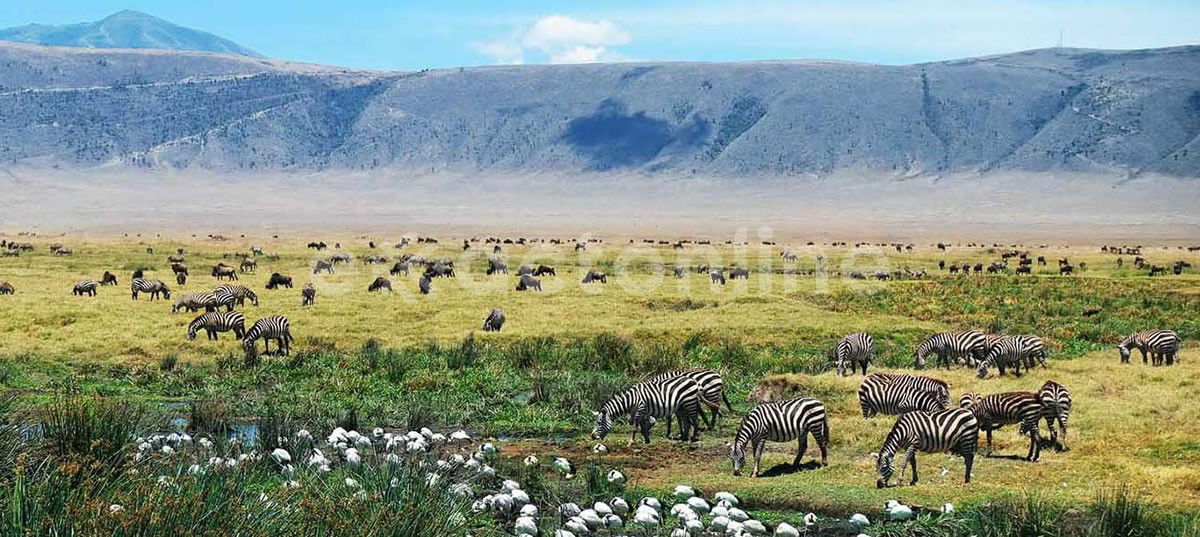Ngorongoro is named after the massive crater that forms a popular watering hole for many of Tanzania’s wildlife. Black rhinos, lions, elephants, zebras, flamingos and a plethora of other wildlife can be found quite easily in this area.
Ngorongoro Crater National Park: Facts, Features and More
Features
Accomodation & Services
Why should you visit? Ngorongoro Conservation Area was originally part of the Serengeti National Park, and was designated as a residence to the Maasai people in 1959. It is completely unique in that it provides protected status for wildlife while allowing for the habitation of humans. In 1979 the area became a UNESCO World Heritage Site. Ngorongoro includes a series of volcanoes, one of which (Oldoinyo Lengai) is still active. It is named after its main feature, the Ngorongoro crater: a large volcano that collapsed within itself, leaving a crater 610m (2,000 ft) deep and 260 sq km (100 sq mi). Thousands of wildebeest, buffalo, gazelles and zebra call this crater home. Few black rhinos and hippos remain, but the crater has the largest lion density at 62 as of 2001. There are also leopards, elephants, and reedbuck but in smaller numbers. The surrounding rift valley, with its plains and two lakes are part of the famous annual migration that sweeps up millions of mammals, predator and prey. So what are you waiting for? Start planning your safari now! 
